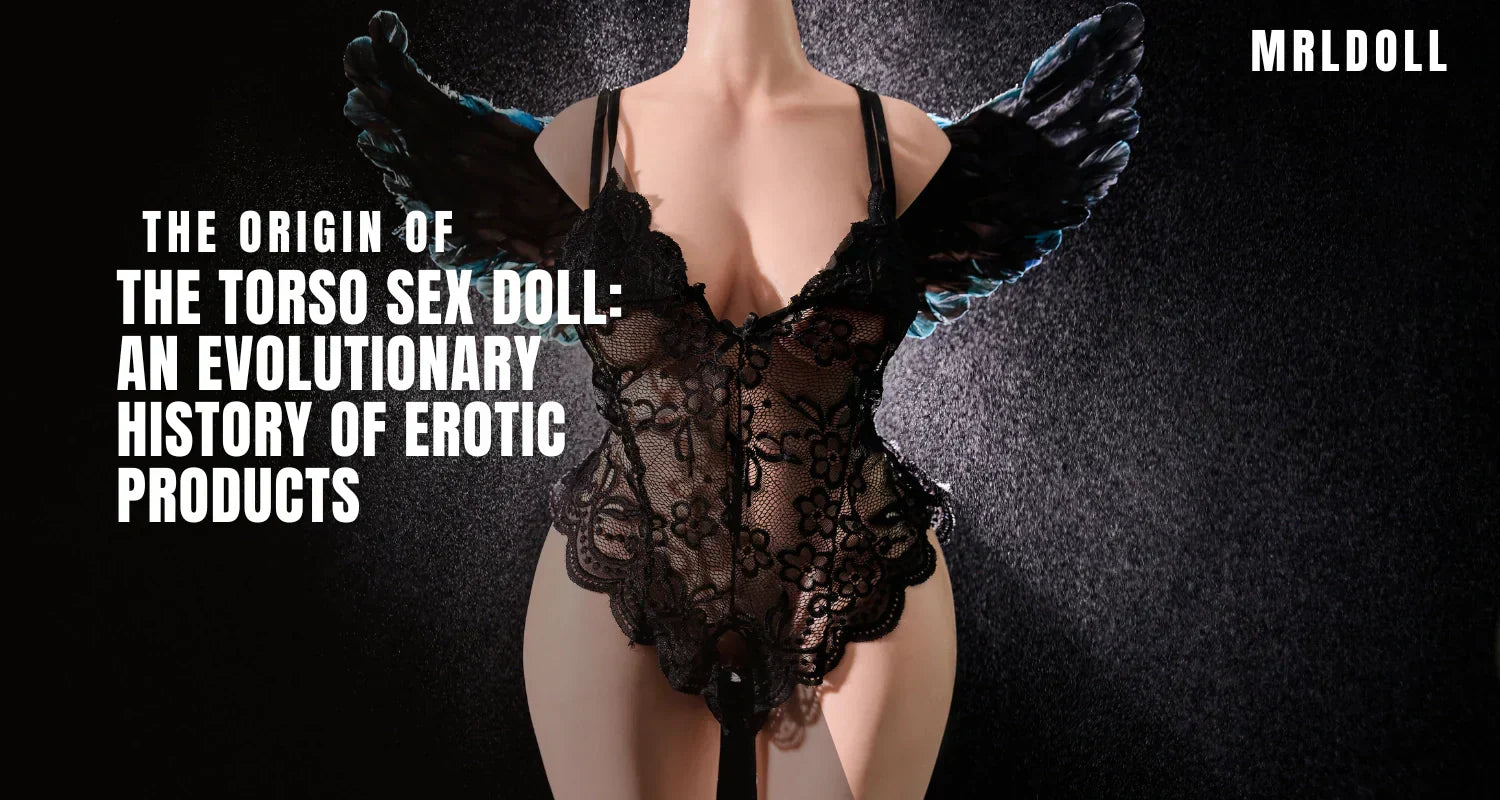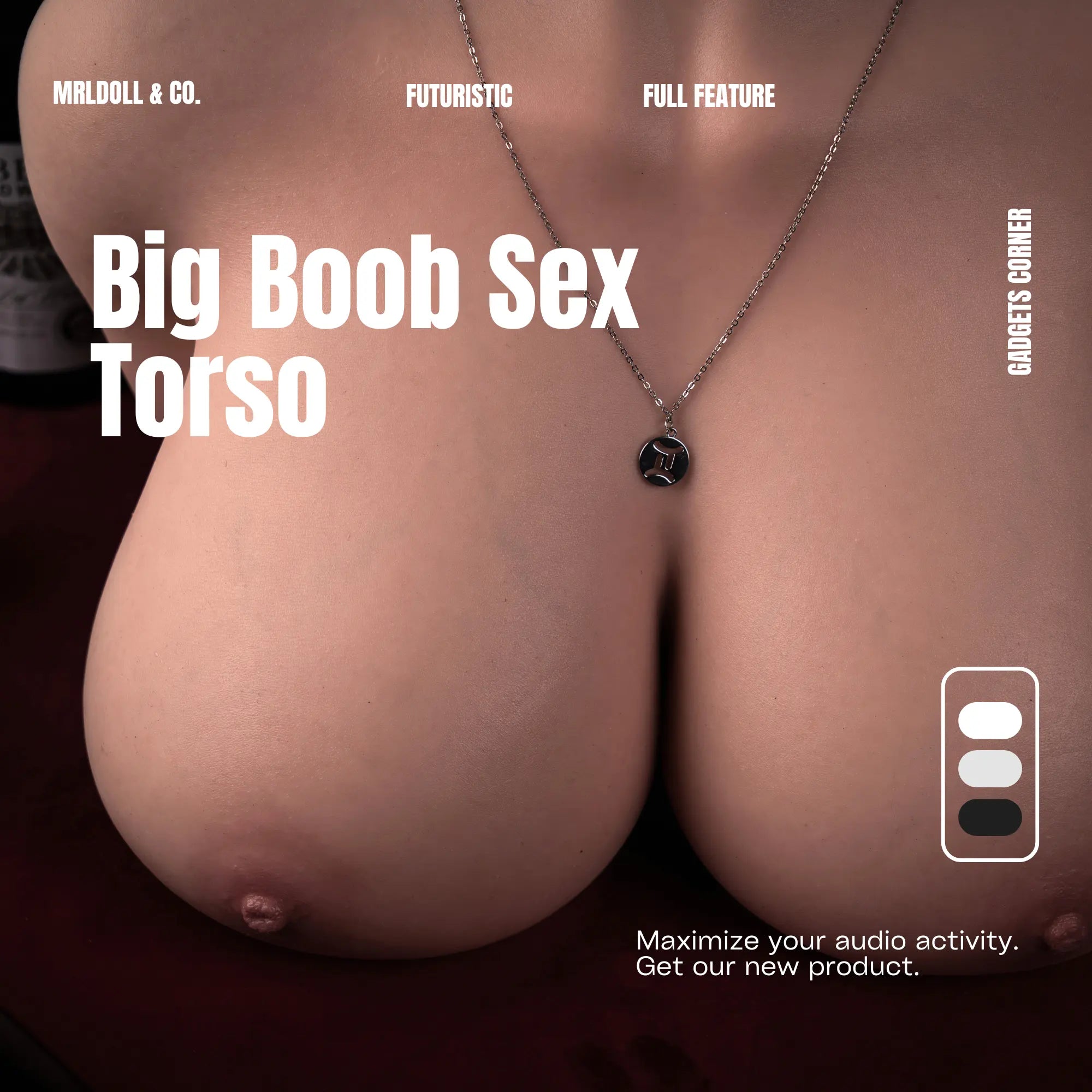The Origin of the Torso Sex Doll: An Evolutionary History of Erotic Products
Abstract
This article delves into the origin of the “realistic torso sex doll,” exploring its evolution from ancient sexual relief tools to the emergence and development of modern high-tech lifelike dolls. It carefully examines the cultural, technological, and societal factors that have influenced its progression. By referencing market data and technical reports up to 2024, this article aims to present readers with a comprehensive and insightful panorama of the evolution of sex dolls.
I. Early Explorations and Cultural Roots of the Torso Sex Doll

1.1 Ancient Pursuits of Sexual Relief: Beyond a Simple Masturbation Aid
The need for sexual relief has existed since the dawn of civilization. In ancient cultures such as Egypt, Greece, and Rome, there are numerous accounts of sexual auxiliary tools. Although these early “masturbators” are not direct precursors of the modern realistic torso sex doll, they embody early human creativity driven by the lack of sexual partners or the desire for additional pleasure. Archaeological discoveries have hinted at the existence of symbolic sex figurines or sculptures used in religious ceremonies or fertility rites—suggesting that the emotional projection onto human-like figures laid the psychological groundwork for modern sex dolls.
1.2 The Evolution of Humanity’s Longing and Emotional Substitutes
Throughout history, numerous men who could not “possess” the beautiful statues of their desires resorted to various means to satisfy their inner longing by engaging with objects bearing feminine traits. Sailors, for instance, would craft simple “sex dolls” from cloth, referred to in French as dame de voyage (travel lady) and in Spanish as dama de viaje (travel lady). Even today in Japan, these figures are sometimes called “Dutch ladies”—a term stemming from documents that attribute the invention of handmade leather masturbatory dolls to 17th-century Dutch sailors who later introduced them to Japan.
A notable historical account is from 1916 when Austro-Hungarian artist Oscar Kirchzica, reeling from heartbreak as his beloved pianist and composer Alma Mahler left him, commissioned a life-size “Mahler Doll.” He specified not only the doll’s appearance but also the precise tactile quality of its skin. Historians disagree on his reaction to the finished product—some claim he fell deeply in love with it, while others insist he was profoundly disappointed. What is agreed upon is that the doll’s touch resembled a high-quality plush toy rather than human skin. Kirchzica even produced several paintings of his “lover,” and eventually, after a gathering at his home, he disposed of the doll—either by burning or burying it—a story that has long fascinated doll collectors through the ages.
1.3 The Emergence of Surrealism and the Commercial Seeds of a New Concept
The gateway to the modern sex doll was further opened by the human models of surrealists such as Man Ray and Salvador Dalí. At a 1938 surrealist exhibition in Paris, a “Human Model District” displayed 16 works, among which Dalí’s Taxi in the Rain was particularly eye-catching—with its depiction of a half-naked woman covered in snails. Man Ray once commented that surrealism was not about simply merging nudity with pornography but rather about using models to capture the essence of humanity. Additionally, there is a rumor that during World War II, in an attempt to prevent German troops from engaging sexually with non-Aryan women, Hitler ordered the SS to develop sex dolls to satisfy soldiers’ needs. Whether true or not, this period in Germany is often considered an early spark in the commercialization of sex dolls.
In the 1950s, a German company introduced the “Lily Doll,” inspired by a sensually candid comic character. Despite being only 11.5 inches tall and lacking functional utility, this plastic doll was dubbed “an imitation of eroticism” and unexpectedly served as an inspiration for the later Barbie doll. By 1968 in the United States, when postal restrictions on adult products were relaxed, advertisements for sex dolls began appearing in adult magazines. During the 1980s, these dolls—predominantly inflatable and often used as gag gifts at fraternity parties—became commonly available in adult stores. As noted by Anthony Ferguson, author of The History of Sex Dolls, early technological advancements focused mainly on simulating oral, vaginal, and anal areas, while inflatable dolls were limited by their inability to support human weight, their fragile seams, and short lifespans.
1.4 Breakthroughs Driven by Art and Technology
In the late 1990s, American artist Matt McMullen introduced a lifelike silicone doll project at an art festival and showcased the results online. This move greatly promoted the practical evolution of sex dolls. Shortly thereafter, a surge of inquiries arose—specifically regarding whether these dolls could emulate the physiological structure of the human body. Although initial models lacked full anatomical realism, these demands spurred McMullen to further develop highly realistic sex dolls. Notably, radio personality Howard Stern even claimed to have one of McMullen’s dolls, engaging with it on-air and boosting the company’s reputation dramatically.
II. The Rise of Modern Torso Sex Dolls through Technological Innovation

2.1 Commercialization of Inflatable Dolls: Affordability and Convenience
In the early 20th century, with the development of the plastics industry, inflatable dolls emerged as an affordable and easily manufactured tool for sexual relief. Despite their significant differences from real human appearances and textures, their portability and low cost led to rapid adoption among individuals who were single or lacked regular sexual partners.
2.2 The Silicone Revolution: A Material Transformation in Erotic Products
From the late 20th century into the early 21st century, the widespread use of silicone revolutionized the manufacture of sex dolls. With its non-toxic, durable, and soft characteristics, silicone is highly suited for creating lifelike dolls. Compared with inflatable dolls, silicone models exhibit marked improvements in skin texture, facial details, and body proportions. According to a 2023 market report, the sales of high-end silicone sex dolls continue to rise, highlighting consumers’ increasing pursuit of quality and realism. Such premium products not only meet physiological needs but are also beginning to address the desire for emotional companionship.
2.3 Intelligence and Personalization: New Directions for Future Developments
In recent years, innovations in artificial intelligence, sensors, heating systems, and customizable options have ushered modern full body sex dolls into a completely new era. Some high-end models can simulate body temperature, are equipped with internal skeletal systems to assume lifelike poses, and can even be personalized via dedicated mobile applications. Excitingly, some research institutions are exploring advanced AI technology for these dolls, enabling more complex dialogue and interactive responses to deliver deeper emotional companionship. Early 2024 market research indicates robust consumer interest in products with interactive and customizable features, suggesting that future sex aids will become even more intelligent, human-like, and diversified.
III. Social Impact and Ethical Debates
3.1 Sex and Emotion: Diverse Interpretations in Social Psychology
As sex dolls become increasingly widespread, they also stir extensive debate over their social impact and ethical implications. Proponents argue that such devices can provide individuals with much-needed comfort, reduce instances of sexual crime, and help people explore their personal sexuality. Conversely, critics are concerned that sex dolls may exacerbate gender discrimination, contribute to the objectification of women, and negatively affect interpersonal relationships. Ongoing discourse in both academic and public spheres continues to examine the legal status, moral boundaries, and psychological effects associated with sex dolls.
3.2 Ethical Considerations and Future Trends
Historical accounts of sexual substitutes during wartime—while lacking clear evidence of large-scale official production—demonstrate that in extreme conditions, soldiers often resorted to improvising or imagining substitutes to alleviate both physical and psychological stress. This phenomenon not only provided early inspiration for the design of modern sex dolls but also sparked discussions on technological ethics and emotional belonging.
IV. Conclusion
The origin and evolution of Men Sex Toys is a captivating narrative that reflects humanity’s persistent quest for sexual relief, the drive for technological innovation, and the evolving cultural landscape surrounding intimacy and emotional connections. From the simplest sexual aids of the past to today’s highly realistic, smart sex dolls, each technological milestone mirrors broader shifts in societal values and human desire. With ongoing technological advancements, sex dolls will undoubtedly continue to evolve, playing an increasingly multifaceted role in human life—beyond merely meeting physiological needs to fostering emotional connections and personalized experiences.
FAQ
Q1: Besides inflatable and silicone, are there other materials used for [Men Sex Toys]?
A: Yes, some products are made with TPE (thermoplastic elastomer) and other materials. TPE offers a softness between silicone and plastic, though its durability is generally inferior to that of silicone.
Q2: How is [Men Sex Toy] perceived across different cultures?
A: Different cultures exhibit significantly varied acceptance of sex dolls. Some environments, which are relatively open, regard them as personal items, whereas more conservative cultures may view them as ethically and morally problematic.
Q3: Is it legal to purchase and use [Men Sex Toys]?
A: In most countries and regions, the purchase and use of adult products—including sex dolls—are legal, though there may be age restrictions and specific regulatory requirements. It is advisable to check local laws and regulations before buying.
Q4: What future developments can be expected for [Men Sex Toys]?
A: Future sex dolls are anticipated to make strides in areas such as artificial intelligence, emotional interactivity, and customizable features. They are expected to deliver more realistic tactile feedback, natural language communication, and even integrate with virtual reality technology for a more immersive experience.










